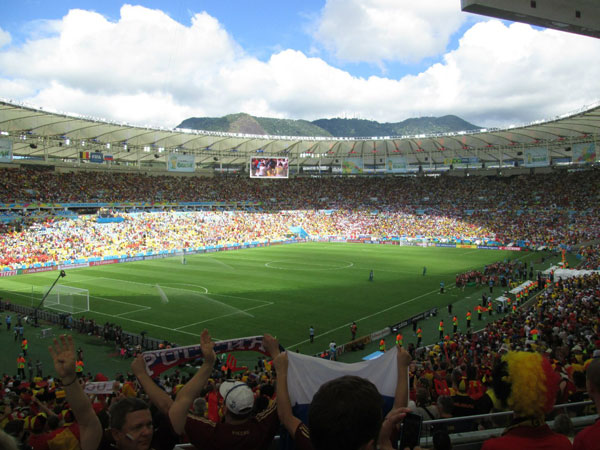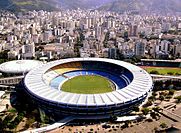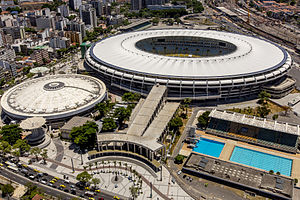The Maracanã Stadium is a football stadium in Rio de Janeiro, Brazil. The stadium is part of a complex that includes an arena known by the name of Maracanãzinho, which means "The Little Maracanã" in Portuguese. Owned by the Rio de Janeiro state government, it is, as is the Maracanã neighborhood where it is located, named after the Rio Maracanã, a now canalized river in Rio de Janeiro.
The stadium was opened in 1950 to host the FIFA World Cup, in which Brazil was beaten 2–1 by Uruguay in the deciding game. Since then, it has mainly been used for football matches between the major football clubs in Rio de Janeiro, including Flamengo, Fluminense, Botafogo and Vasco da Gama. It has also hosted a number of concerts and other sporting events.
The total attendance at the last (and indeed decisive game, but not a Final) game of the 1950 FIFA World Cup was 199,854, making it the world's largest stadium by capacity (when it was inaugurated). After its 2010–13 renovation, the rebuilt stadium currently seats 78,838 spectators, making it the largest stadium in Brazil and the second in South America after Estadio Monumental in Peru.[3] It was the main venue of the 2007 Pan American Games, hosting the football tournament and the opening and closing ceremonies. The Maracanã was partially rebuilt in preparation for the 2013 FIFA Confederations Cup, and the 2014 World Cup, for which it hosted several matches, including the final. It also served as the venue for the opening and closing ceremonies of the 2016 Summer Olympics and Paralympics, with the main track and field events taking place at the Estádio Olímpico João Havelange.












